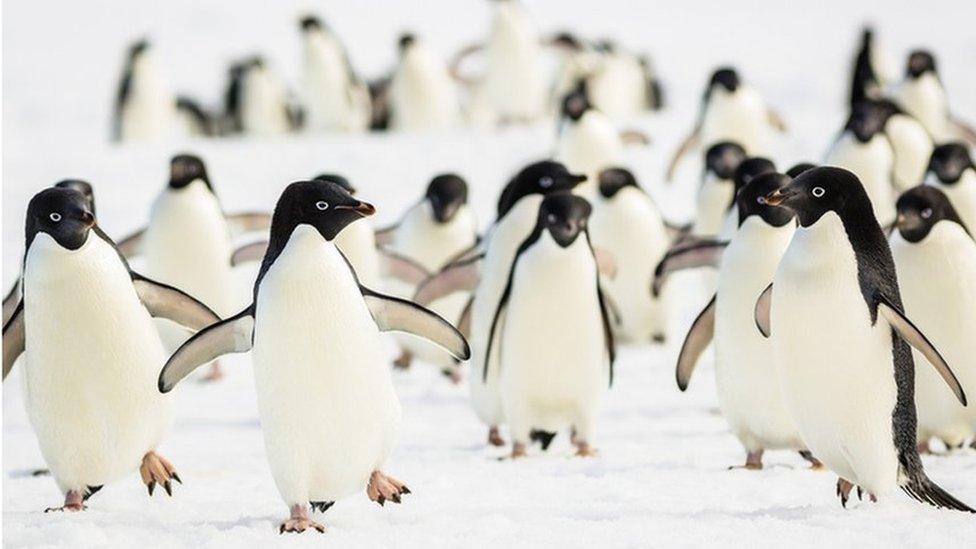AdÃĐlie penguins: Population of species decreasing in parts of east Antarctica
- Published
- comments

Scientists in Australia say they have recorded a big drop in a population of AdÃĐlie penguins off the east coast of Antarctica.
Long-term monitoring has revealed a decrease of nearly 50% in the number of the birds near the Mawson research station over the past decade.
Researchers say that the decline is a big contrast to other AdÃĐlie penguin populations in east Antarctica where numbers have either been stable or increasing.
Experts think this could have been caused by too much ice near the penguin colony.
What did scientists find?
In order to collect the data, seabird experts at the Australian Antarctic Division monitored a 100km stretch of coastline across 52 islands in east Antarctica for 10 years.
They found a decrease of around 154,000 birds over that time - a drop of 43% in the population.
Seabird ecologists say the rate of decline is similar to that in AdÃĐlie penguin populations on the Antarctic Peninsula, where fishing, climate change and human activity have all had an impact on numbers.
However, the decline in the Mawson population is thought to have been caused by environmental conditions.
âĒ The AdÃĐlie penguin was discovered way back in 1840 by a French scientist, who named the penguin after his wife - Adele
âĒ You can spot the difference between AdÃĐlie penguins and other species of penguin by seeing if they have a white ring around their eyes. If they do then you know it's an AdÃĐlie penguin
âĒ The average height of an AdÃĐlie penguin is 70cm
âĒ AdÃĐlie penguins generally weigh 3-6kg
Dr Louise Emmerson from the Australian Antarctic Division said the decrease was started by "five years of extensive summer sea ice" close to the colony.
This ice can be up to 80km in length, which means that the penguins have to take a very long trip to get to the ocean for food.
Between 2003-2008 scientists say there was a lot of this ice - so-called "fast ice" - which resulted in hardly any chicks being able to survive.
Dr Emmerson said that there's been a decrease in fast ice around Antarctica and they are still looking into what caused the increase in fast ice in this particular area.
She added that the next step was to continue research and long-term monitoring so that they can better understand population changes.
She also said that scientists hoped the penguin population in this area could increase again within the next few years.
